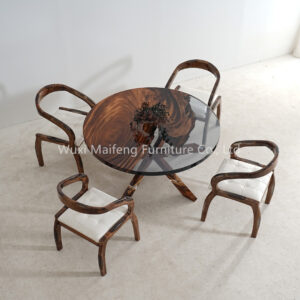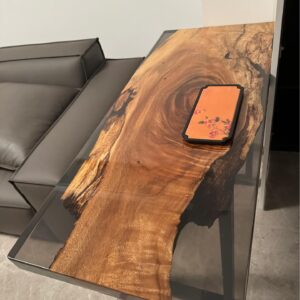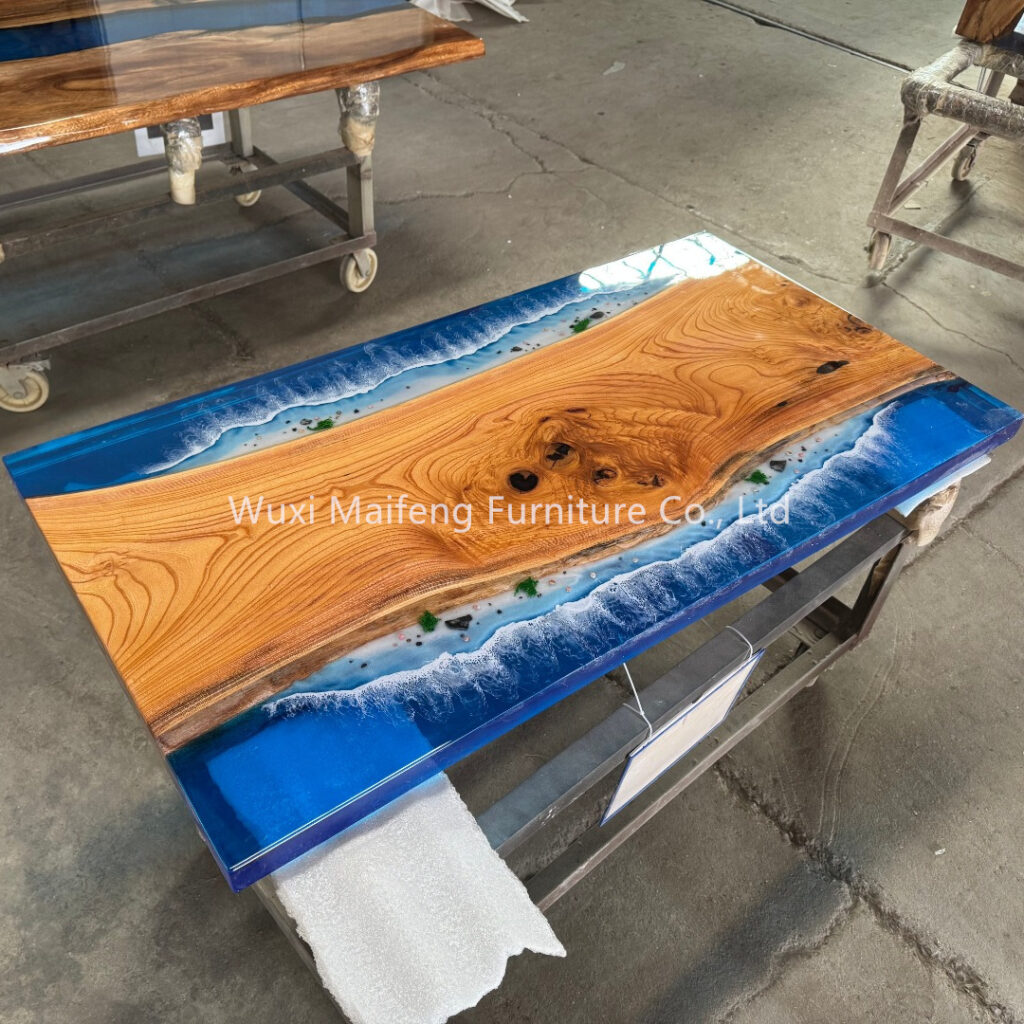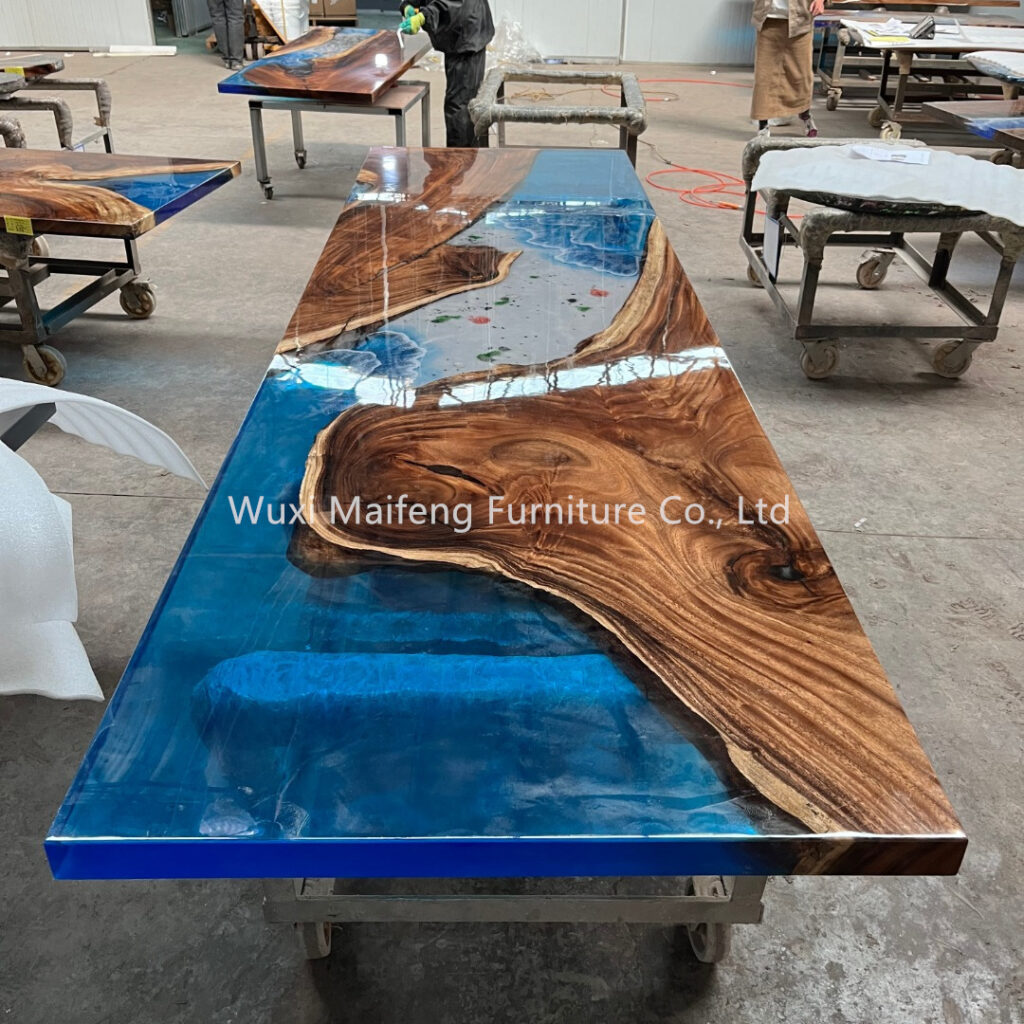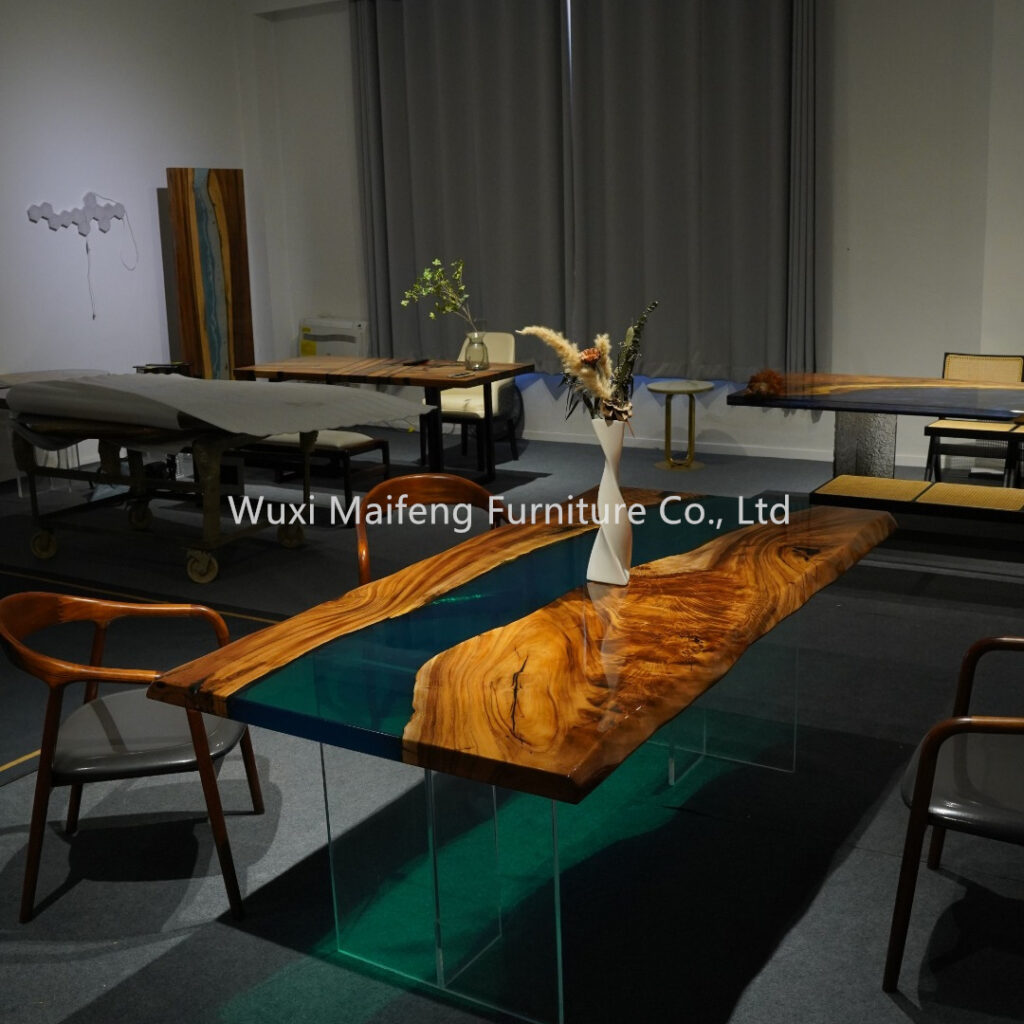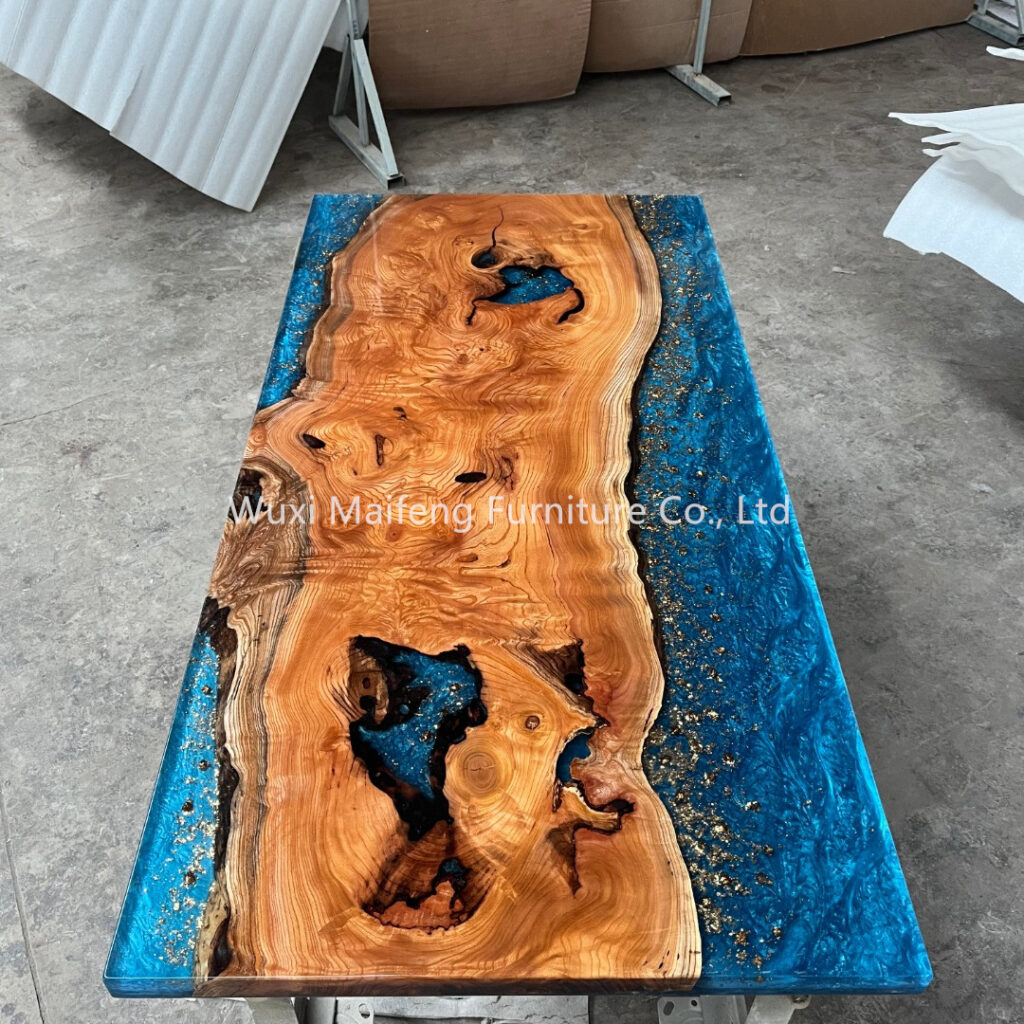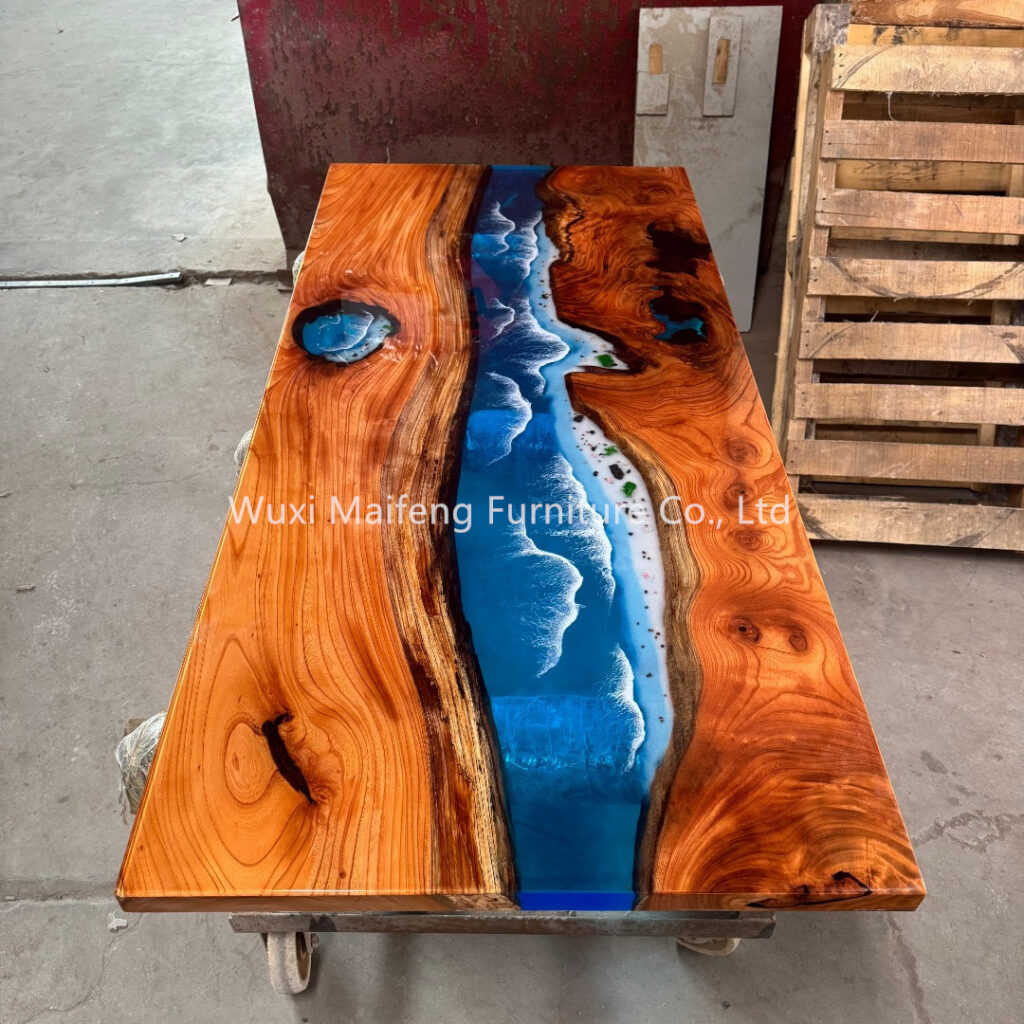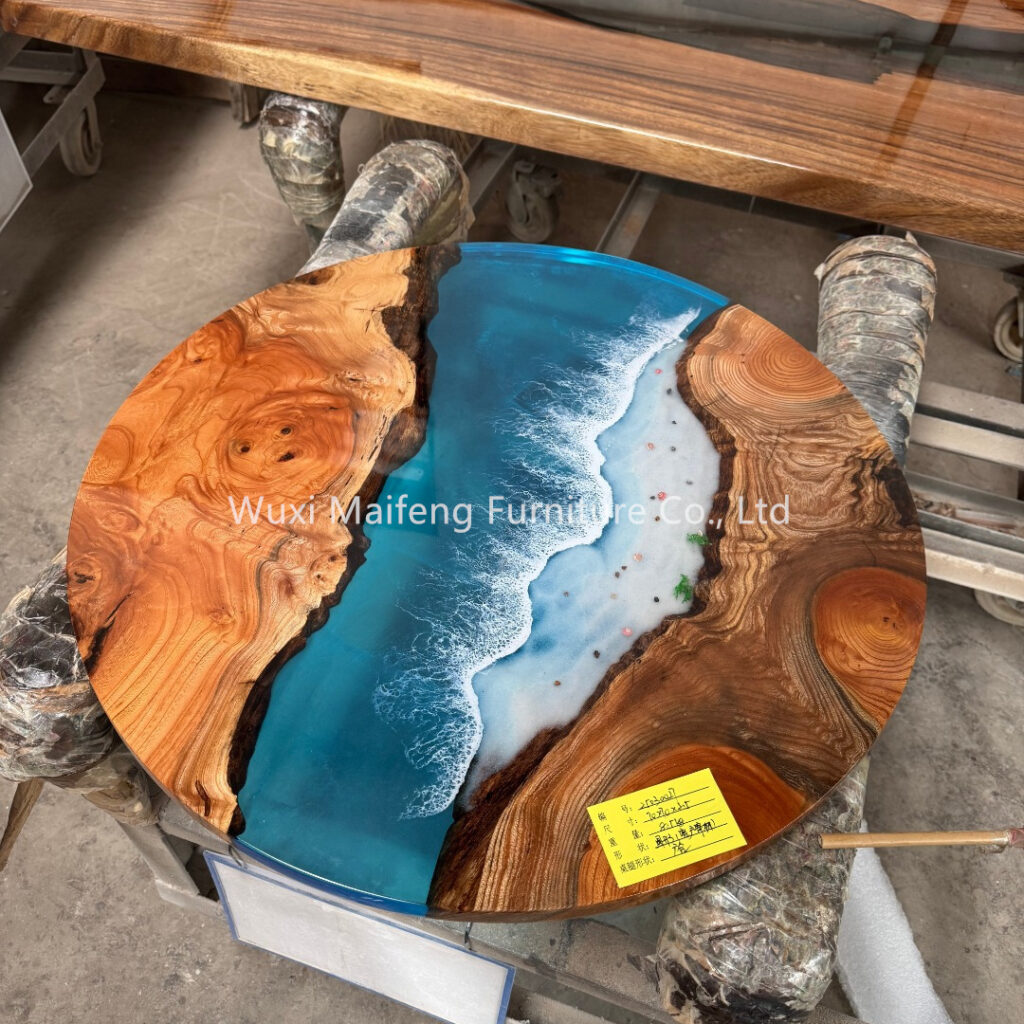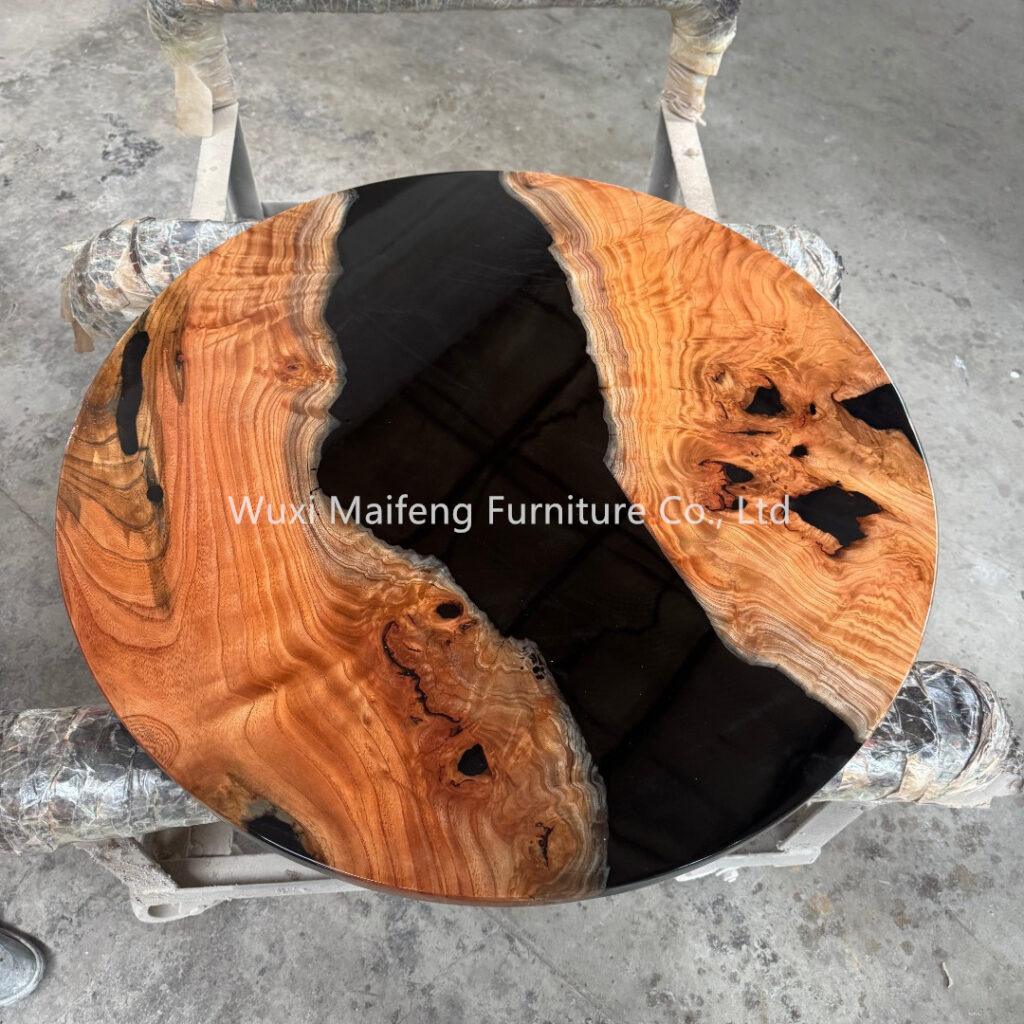The journey of creating a walnut epoxy table begins with carefully selected walnut wood. Walnut is renowned for its rich, warm tones that range from a deep chocolate brown to lighter, caramel – hued streaks. The natural grain patterns of walnut are nothing short of breathtaking, with each board telling a story of the tree’s growth over the years. These grains can be straight, wavy, or even exhibit a beautiful fiddle – back figure, adding a sense of depth and character to the table.
Enter epoxy resin, the material that transforms a simple slab of walnut into a work of art. Epoxy resin is a clear, durable, and highly versatile substance. When poured into the natural crevices, knots, and voids of the walnut wood, it acts as a preservative, enhancing the natural features of the wood while also providing a sleek, glass – like finish. The epoxy not only fills in the imperfections but also creates a stunning contrast between the organic texture of the wood and its own smooth, reflective surface.
One of the most captivating aspects of a walnut epoxy table is its functionality. The smooth epoxy surface is highly resistant to scratches, heat, and moisture, making it a practical choice for everyday use. Whether it’s a dining table for family meals, a coffee table in the living room, or a statement – making desk in the study, the walnut epoxy table can withstand the rigors of daily life while maintaining its beauty.
From a design perspective, a walnut epoxy table can effortlessly complement various interior styles. In a modern, minimalist setting, it serves as a focal point, with its clean lines and natural elements adding a touch of warmth and sophistication. In a more rustic or farmhouse – style home, the table blends in perfectly, highlighting the charm of natural materials. And in a contemporary, industrial – inspired space, the contrast between the raw wood and the sleek epoxy creates an edgy, urban aesthetic.
 |
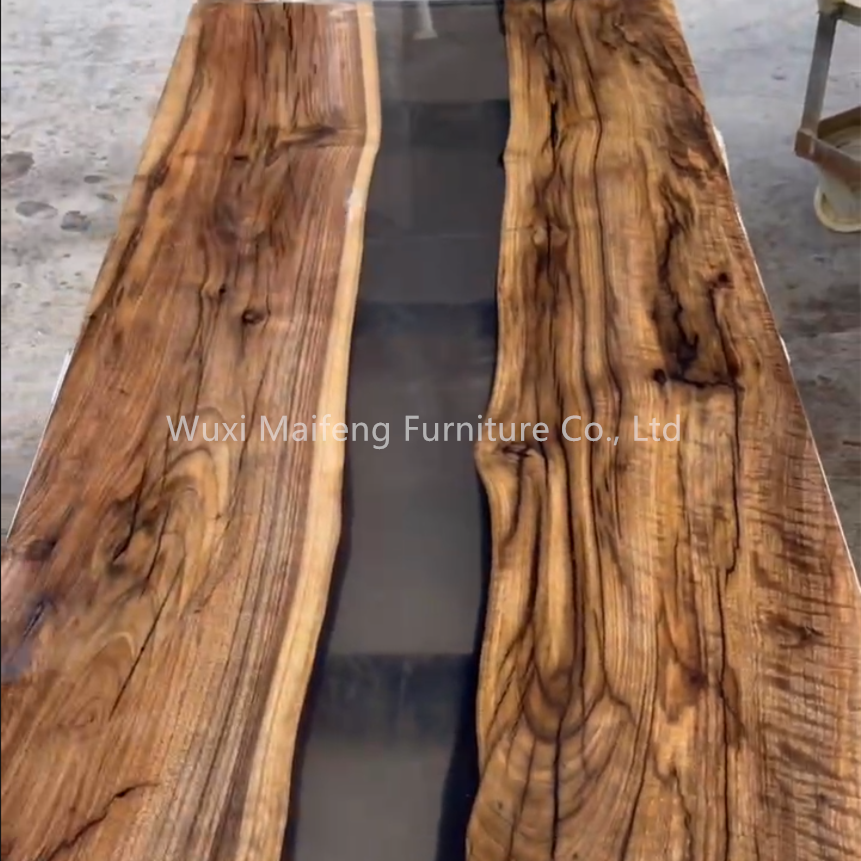 |




